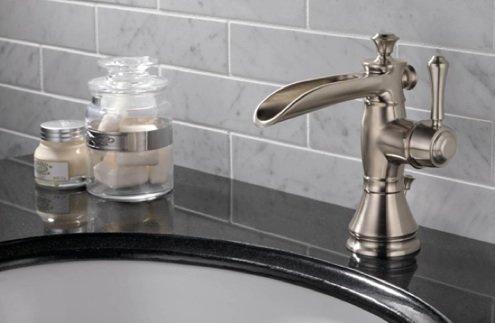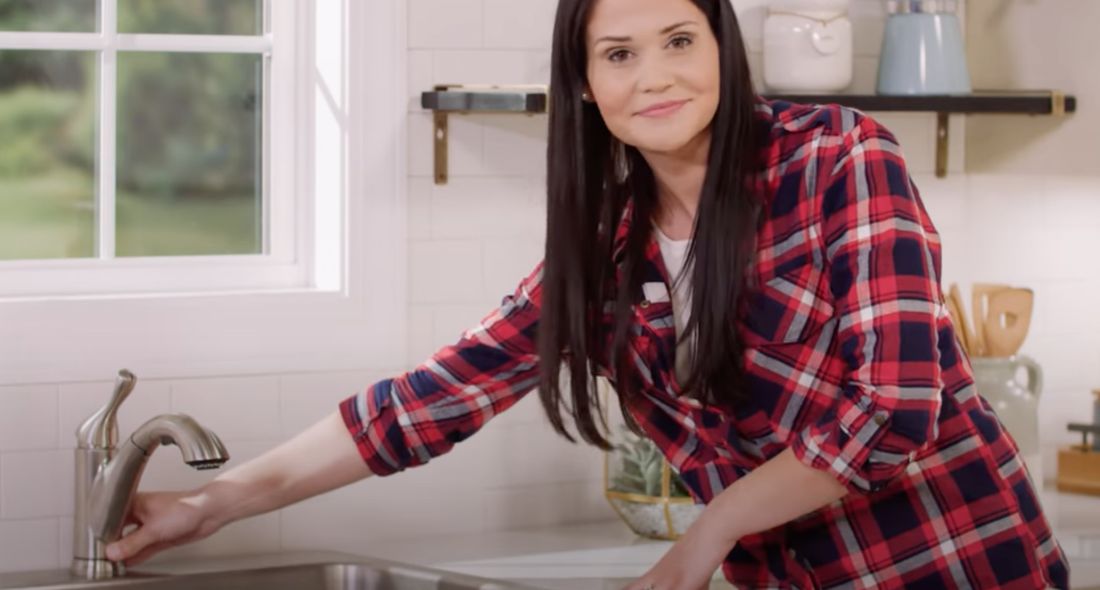The writer is making a few great pointers on Why Are My Faucets Dripping (And Can I Fix It Myself)? in general in the article down below.

Dripping taps might appear like a small hassle, yet their impact exceeds just the annoyance of the sound. From wasting water to sustaining unnecessary economic costs and wellness threats, disregarding a dripping faucet can lead to different effects. In this article, we'll delve into why it's vital to address this usual family concern immediately and successfully.
Wastefulness of Water
Environmental Influence
Trickling taps contribute significantly to water wastefulness. According to the Epa (EPA), a single faucet trickling at one drip per second can throw away greater than 3,000 gallons of water annually. This not only stress water sources but additionally affects environments and wild animals depending on them.
Financial Expenses
Increased Water Expenses
Past the environmental impact, trickling taps can pump up water expenses significantly. The built up waste in time translates into greater utility expenditures, which can have been stayed clear of with prompt fixings.
Potential Property Damage
Moreover, prolonged leaking can cause damage to fixtures and surface areas surrounding the tap. Water build-up can create discoloration, deterioration, and also architectural issues if left unattended, resulting in added fixing costs.
Wellness Problems
Mold and Mold Growth
The constant visibility of moisture from a trickling faucet develops an excellent setting for mold and mildew development. These fungis not only compromise indoor air high quality but also position health and wellness threats, specifically for individuals with breathing conditions or allergies.
Waterborne Illness
Stagnant water in leaking taps can come to be a breeding place for bacteria and various other virus, increasing the risk of waterborne illness. Contaminants such as Legionella germs prosper in stagnant water, possibly resulting in severe ailments when consumed or breathed in.
Do it yourself vs. Specialist Repair work
Pros and Cons of Do It Yourself Repair Work
While some might attempt to deal with a leaking faucet themselves, DIY fixings come with their very own collection of challenges. Without appropriate knowledge and tools, do it yourself efforts can exacerbate the issue or cause insufficient fixings, lengthening the problem.
Advantages of Employing a Professional Plumber
Hiring an expert plumber makes certain that the underlying cause of the dripping faucet is resolved properly. Plumbing technicians have the knowledge and equipment to diagnose and repair faucet issues effectively, saving time and reducing the risk of further damages.
Step-by-Step Overview to Fixing a Dripping Faucet
Devices Required
Before trying to fix a leaking faucet, collect the required tools, including a flexible wrench, screwdrivers, replacement parts (such as washers or cartridges), and plumber's tape.
Common Tap Issues and Their Solutions
Recognize the kind of tap and the certain concern triggering the drip. Usual troubles include worn-out washing machines, corroded shutoff seats, or malfunctioning O-rings. Refer to maker guidelines or on-line tutorials for detailed guidance on repair services.
Safety nets
Normal Maintenance Tips
To avoid leaking faucets, carry out regular maintenance such as cleansing aerators, evaluating for leaks, and changing damaged components quickly. Additionally, take into consideration installing water-saving tools or upgrading to much more reliable components.
Value of Prompt Services
Attending to trickling faucets as soon as they're seen stops more water waste and prospective damages, ultimately conserving both water and cash in the long run.
Effect On Property Worth
Understanding of Well-Maintained Property
Maintaining a home in good condition, consisting of dealing with upkeep concerns like leaking taps, boosts its perceived value and value amongst potential purchasers or tenants.
Influence on Resale Worth
Residences with well-maintained plumbing components, including faucets, command greater resale worths in the realty market. Dealing with trickling taps can contribute to a favorable impression during home examinations and arrangements.
Environmental Responsibility
Private Contribution to Conservation
Taking obligation for fixing leaking faucets aligns with more comprehensive initiatives toward water preservation and ecological sustainability. Every person's actions collectively make a considerable effect on maintaining priceless resources.
Lasting Living Practices
By prioritizing prompt repairs and adopting water-saving practices, individuals contribute to sustainable living methods that benefit both present and future generations.
Final thought
Resolving a leaking faucet exceeds mere ease; it's an essential step towards saving water, lowering economic costs, and safeguarding health and property. Whether via DIY repair work or specialist support, acting to repair leaking faucets is a small yet impactful method to promote responsible stewardship of resources and add to a healthier, extra sustainable future.
How to Fix a Leaky Faucet: Step-by-Step Repair Guide
A leaky faucet may seem like a simple annoyance, but if it's not fixed promptly, that leak could cost hundreds to potentially thousands. From water damage to mold, mildew, and high water bills, even a tiny leak can be catastrophic if left unattended. Damage like this can even affect the overall value of your home, so it's important to take the right approach for leaky faucet repair. You may need the help of a plumber in some cases, but we've got a few tips you can try on how to fix a leaky faucet before calling the pros.
Four Faucet Types
When you're learning how to fix a leaky faucet, the first step is knowing what kind of faucet you're working with! There are four common types.
Cartridge Faucets
Cartridge faucets come in one- or two-handled varieties. In one-handled cartridge faucets, hot and cold water combines in a single cartridge. In the two-handled versions, hot and cold water are controlled separately and mixed in the faucet.
Ball Faucets
Ball faucets have a single lever you push up and down to adjust the pressure and rotate to change the temperature. A slotted metal ball controls the amount of water allowed into the spout.
Compression Washer Faucets
They're the oldest type of faucet, but they're still used in many homes — especially older ones. Compression faucets have two separate handles that, when turned, raise or lower the washer that seals a water valve. This valve stops water from flowing through the faucet when it is turned off.
Disc Faucets
Disc faucets rarely need to be repaired due to their maintenance-free design. The water flow is controlled by two discs — the upper one raises and lowers against a fixed lower disc, creating a watertight seal. If your disc faucet starts leaking, you may need to replace the seals or clean residue buildup from the inlets.
Fixing a Leaky Faucet
Step 1: Turn Off the Water
Whether you're learning how to fix a leaky bathtub faucet or how to fix a leaky kitchen faucet, always turn off the water supply to your working area when you're fixing a leak. The last thing you want is a flood added to your list of things to fix.
Look for the shutoff valves below your sink or around the tub and turn them clockwise to stop the water flow. If your faucet doesn't have shutoff valves, you may need to turn off the water for the whole house. Check to make sure it's off by turning the faucet on. If nothing comes out, you're ready to start the repair.
Step 2: Take Apart the Faucet
How you disassemble your faucet depends on the type of fixture you have. You can use a flathead screwdriver to remove the caps on top of the handle or handles for cartridge and compression faucets. Inside, you should see handle screws. Unscrew these with a screwdriver to remove the handle.
Disc- and ball-style faucets will typically have an inlet screw near the handle, and removing that will reveal the interior of the faucet.
Detach the Valve Stem
For cartridge- and compression-style faucets, you'll see the inner valve stem or cartridge once you remove the faucet handles. If you have a compression faucet, unscrew the brass valve stem. If you have a cartridge faucet, pull out the cartridge. If your cartridge has been in place for a while, it may require some tools or extra force to remove it due to mineral deposits.
Examine and Replace Parts
Once you've removed the parts, check them out to confirm what needs to be replaced. You may see corroded rubber washers, O-rings, stems, or cartridges. On a ball-style faucet, check the seats and springs for damage.
If you need to repair a leaky disc faucet, check the inlet and seals on the lower disc.
Once you determine what parts must be replaced, visit your local hardware store. Bring the damaged parts with you to ensure you can purchase the correct components to replace them.
Clean Valves and Faucet Cavity
If you've removed a stem or cartridge, you may notice mineral buildup in the faucet's threads. Use white vinegar to clean the valve seat by soaking it for a few minutes, then scrub it away with a soft toothbrush and rinse with warm water. You can also clean the interior of the faucet in the same way.
Reassemble the Faucet
Once your faucet is cleaned and the required parts have been replaced, it's time to reassemble it. Put the pieces back together and slowly turn the water supply back on. Doing this slowly is crucial because too much initial water pressure can damage the new hardware you've just installed.
https://homewarranty.firstam.com/blog/how-to-fix-leaky-faucet

I hope you enjoyed our article about Why It's Important to Fix Leaky Faucets. Thank you so much for finding the time to browse our piece of content. Sharing is caring. You never know, you may very well be doing someone a favor. We thank you for reading our article about Why It's Important to Fix Leaky Faucets.